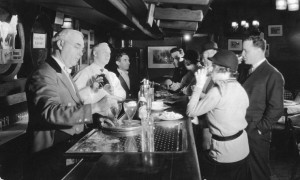
Start with the Classic Cocktails
More of you than ever before are drinking good, fresh cocktails. This is a good thing of course and luckily it is easier to find a quality cocktail whilst out than it has in recent decades. Some of you are even honing your bartending skills while making cocktails at home. This is a very good thing.
If the number of you reading each week’s “Cocktail of the Week” is any indicator then a whole lot of you are making drinks at home. However, I suspect that many of you are more voyeur than inspiring barmen and women but that needs to change. It’s time to roll up your sleeves, grab the jigger, and start making cocktails. Making cocktails at home is simply a matter of arming yourself with the right tools and the ability to follow simple directions. In other words, there are no excuses.
Those of you who are regular readers at BevX know that we love simple, classic cocktails. I’ll save you the more is less speech and simply point out that the vast majority of classic cocktails rely upon four or fewer ingredients with a simple garnish. These classic cocktails have stood the test of time and have offered inspiration for thousands of new cocktails that are typically just a clever variation of the classic. With this in mind I aim to better acquaint you with three classic cocktails that you should know: The Manhattan, Daiquiri, and the Sidecar.
The Three Cocktails You Must Know
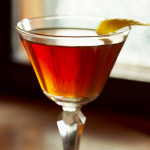
The Classic Manhattan Cocktail
The Manhattan (recipe) is a classic cocktail invented in a bar of the same name in 1874. The original calls for just three ingredients: 2 ounces of Rye Whiskey, 1 ounce of Italian Sweet Vermouth, and a couple dashes of bitters. Stir with ice, don’t shake, and strain into a chilled cocktail glass (erroneously called a martini glass in some circles).
The above paragraph likely seems harmless enough to most folks but I have already started a screaming fit somewhere. The first order of contention is the Whiskey. Some are insistent that it must be Rye while others are happy to make theirs with Bourbon. What’s the difference? In most cases Bourbon is sweeter than Rye so the resulting drink is sweeter as well. The second area of disagreement is the age-old argument of shaken versus stirred. I’ve had them both ways and I like them both ways with the shaken being a bit colder with small flecks of ice and a bit more diluted, which isn’t a bad thing.
Knowing how to make a Manhattan is as easy as reading. Practice will make it better and allow you to explore the subtle variations. It also builds the comfort required to make a few tweaks. Substitute the Rye with Irish or Canadian Whiskey and you have a new drink. Swap the Italian Vermouth for French and another variation is born. Swap the bitters for Absinthe, Amaro, or Fernet and yet another set of variations are born. The possibilities are endless. Then of course there is the last old argument concerning the garnish. Do you finish the drink with a Maraschino cherry or a lemon or both? I like mine with a twist.
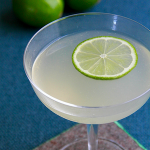
The Classic Daiquiri Cocktail
The Daiquiri (recipe) like many classic drinks has many queued-up to take credit for its invention. In truth the simple marriage of Rum, sugar, and limejuice would require more effort to ignore than to invent. The three ingredients hail from the same locales so all that was required was a name. When the US Army snatched control of the island of Cuba from Spain in 1898 landing first in the village of Daiquiri the naming deed was all but done.
The Daiquiri, perhaps more than any other classic cocktail, has suffered from a gaggle of poor variations and even more tragic technique. When constructing a Daiquiri one should reach for the shaker and some ice and never, I mean never, plug in the blender. Oddly, one of the bars that is often associated with the cocktail’s fame and creation, Floridita in Havana, is likely the spot that later popularized the Daiquiri made in the blender.
The classic Daiquiri is simply: 2 ounces of White Rum, ½ ounce of simple syrup or sugar, and ½ ounce of fresh limejuice. Shake well with ice and strain into a chilled cocktail glass. Serve with a lime wheel and nothing more.
Just because so many poor, pre-maid mixes with an ever-spanning rainbow of fruit flavors has plagued the Daiquiri, you should not shy away from adding your own twist once you have mastered the original. The limejuice can be substituted with nearly any juice you like as long as you keep in mind that the sugar will not be required if you use something less tart than lime. Dark Rum can be used in place of the White Rum in this cocktail, and simple syrup infused with ginger, allspice, chili, pepper, or anything else you can imagine will add another wrinkle to this cocktail.
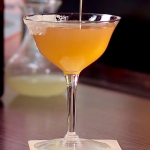
The Classic Sidecar Cocktail
The Sidecar (recipe) is yet another classic that relies upon just four, or three ingredients, depending on your take. The classic consists of: 2 ounces of Cognac, ¾ ounce of Cointreau, ¾ ounce of fresh lemon juice, and ¼ ounce of simple syrup or sugar. Shake well and strain into a chilled cocktail glass. It’s a damn fine cocktail and anyone out there who has not tasted this gem – get to it.
The Sidecar is shrouded in the usual mystery regarding its origins. We can be pretty comfortable in saying that it was first created at the end of WWI. However, the city of origin is hotly disputed while some historians insist that London was the Sidecar’s city of birth while others swear it’s Paris. Regardless of where in was born we do know that they were drinking a bunch of these in post-Prohibition USA and Europe.
The Sidecar is simply begging for inspired variations. We can start with the base Spirit, Cognac, and make countless swaps. Try any brandy for starters and you will have a subtle variation on the theme. Swap in Whiskey, Añejo Tequila, or my favorite aged Rum and you have a different and equally tasty libation. Trade Cointreau for Grand Marnier or any other quality orange liqueur and voilà, a new drink is born. Swap limejuice for the standard lemon juice and another drink is created. If you are using Añejo Tequila or Rum, limejuice will be your best bet anyway.
I hope that this has inspired you to shake-up some classic cocktails of your own at home.
Still Thirsty? Check out Three More Cocktails You Need to Know

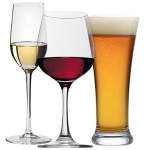




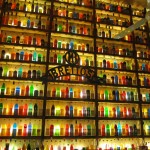












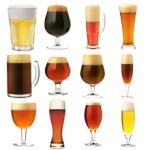

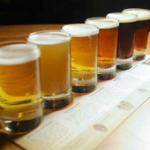
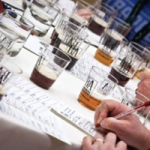
My wife made orange syrup (orange juice and sugar cooked down) for a dessert recipe and didn’t use it all. I said I would use remainder for cocktails. Used it in your sidecar recipe in place of the 1/4 ounce of simple syrup. It was good, but the orange taste overpowered the cognac
My question is: do you have cocktail recipes incorporating orange syrup? As you know, I am one of your faithful readers
John, an orange syrup like the one you described would be a fun addition to cocktails but it needs acid to balance. I imagine it’s pretty sweet. I don’t use any simple syrup in my Sidecar’s as I like a tart drink and I find the sweetness of the orange liqueur to be enough. If you use the orange syrup try adding fresh lemon or lime juice to balance the flavors. Of course you could be adventurous and use a portion of the orange syrup and add white wine vinegar in small amounts until it’s the perfect balance of tart and sweet. Save this mixture and use it with Rum, Tequila, Brandy, or Whiskey. Happy drinking